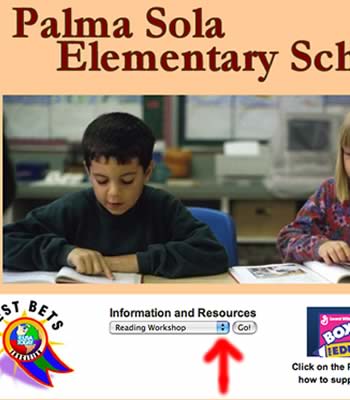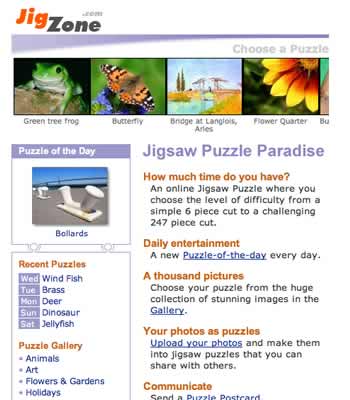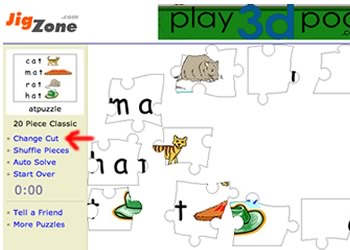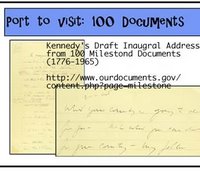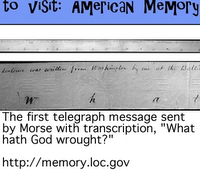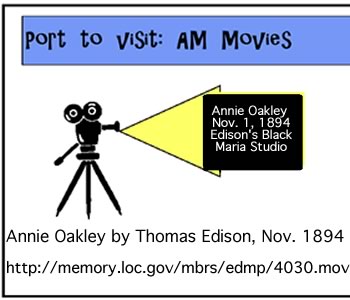
Enhancing lessons with images is one of my passions so...most of the presentations I attended at NECC had something to do with images. One of the presentations I attended was by Dr. David Thornburg's, "Visual Learning and Generation M". I had the pleasure of learning from Dr. Thornburg while working on my masters in education through Walden. Dr. Thornburg talked about how the invention of the printing press effected how we teach and learn. Before the printing press manuscripts had beautiful and colorful drawings, but they had a limited audience. Adding images using the printing press was very costly. They had to carve a picture onto a wooden plate, which was a lot of trouble, and color was not an option. So books were mass produced and made available to the general public but they usually lacked images. So textbooks for teaching also had limited images.

"Today's learners use visual media extensively." "The average youth spends 22,000 hours watching TV by age 18." The outside world markets all kinds of gadgets for this digital generation. Even the textbooks today are rich with images and photographs. Textbook publishers are even setting up website resources to include technology with their products. Our teaching methods however, remain basically old school (through no fault of our own). We mostly use text on a board and talk. It's dependable and we don't need that ever-elusive tech support. Why should we incorporate more images into our lessons?
Just the Facts Mam:
Lynell Burmark, also from the Thornburg Institute, presented "Wonders of the Digital Playground: Internet Resources for Classroom Instruction" and shared some statistics.
"•Humans process visuals 60,000 times faster than text.
•Words are processed sequentially; images simultaneously
•Using illustrated materials can boost retention and recall up 42% and transfer up 89%
•Images are stored in long-term memory"…
and jokingly she asked "Where are words stored? We all know they go in one ear and out the other."*
I think most of us understand that to reach every learner and to really engage today's digital learners images are a must. There is definitely not a lack of resources out there. The problem is that there are too many and we don't have time to sift through them all. So when teachers pass on sites they found to be great resources it narrows down our own searches. Maybe we'll find what we want and maybe not but we don't have to surf through zillions of sites. The last Adams' Tech posting and the next one are all about Internet resources. Here are more with a focus on images.
Web Resources for Images
Recommended by Lynell Burmark
Freefoto.com
http://freefoto.com/index.jsp http://freefoto.com/index.jspPics for Learning
http://pics4learning.comArt Images for College Teaching
http://arthist.cla.umn.edu/aict/htmlBerkeley Digital Library Project
http://elib.cs.berkeley.edu/photos/BUBL Information Services – Image Collections
http://bubl.ac.uk/link/types/images.htmNew York Public Library Web Gallery
http://digitalgallery.nypl.orgAstronomy Pic of the Day
http://antwrp.gsfc.nasa.gov/apodWeb Museum, painters
http://www.ibiblio.org/wm/paintSmithsonian National Portrait Gallery
http://www.npg.si.edu/Digital Librarian – best of the Web
http://www.digital-librarian.com/images.htmlU.S. National Archives & Records Administration
http://www.archives.gov/index.htmlPicturing the Century: One Hundred Years of Photography from the National Archives
http://www.archives.gov/exhibits/picturing_the_century/home.htmlNational Oceanic & Atmospheric Administration
http://www.photolib.noaa.gov/American Memory Project
http://memory.loc.gov/ammem/Civil War Photos
http://memory.loc.gov/ammem/cwphtml/cwphome.htmlAmerican Indians Pacific Northwest
http://memory.loc.gov/ammem/award98/wauhtml/aipnhome.htmlGarst Photographic Collection
http://lib.colostate.edu/wildlifeCybrary of the Holocaust
http://www.remember.orgThe Natural Child Project
http://naturalchild.org/galleryKidspace Comic Strips & Funny Pages
http://www.ipl.org/div/kidspace/browse/fun5000/Calvin and Hobbes (comics)
http://www.ucomics.com/calvinandhobbes/The Official Peanuts Web Site
http://www.unitedmedia.com/comics/peanuts/Amazing Comics by Kids
http://www.amazing-kids.org/akcomics.htmFlickr
http://www.flickr.comUsing Search Engines to find ImagesGoogle Images Search Engine
http://images.google.com/All The Web (Pictures)
http://alltheweb.com/advancedAlta Vista Images Search Engine
http://www.altavista.com/imageLycos Multimedia Search Engine
http://multimedia.lycos.comWeb Crawler (Photos)
http://webcrawler.com*The quotes, photos and links are all from The Thornburg Center and Dr. Thornburg's and Dr. Burmarks separate but equally informative presentations and handouts.
 Keeping up with technology is definitely a collaborative effort. So I'm out there looking at what others are doing. Today Mark Wagner's blog mentioned that all his teacher "participants came in excited about the release of Google Sky". It looks like a great tool to integrate technology into 3rd grade science. To read more about it check out the Google Sky News Story.
Keeping up with technology is definitely a collaborative effort. So I'm out there looking at what others are doing. Today Mark Wagner's blog mentioned that all his teacher "participants came in excited about the release of Google Sky". It looks like a great tool to integrate technology into 3rd grade science. To read more about it check out the Google Sky News Story.



